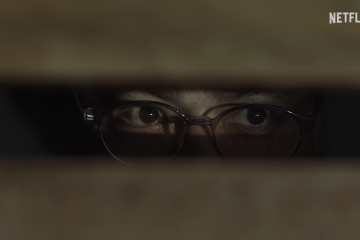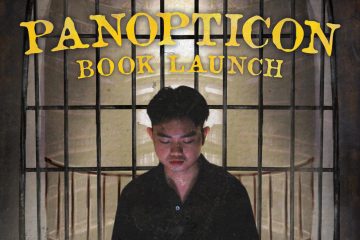
WITH EVERY swish of the powder brush across Trisha’s face, and with every dab of lipstick on her lips, Barbs recalls all the significant moments her dear friend has lived through.
Trisha Echevarria’s (Paolo Ballesteros) final wish to her best friend Barbs (Christian Bables) was that when she dies, she has to be dressed up like a certain celebrity every day on the week of her wake. She soon finishes applying her make-up, and the manager of the beauty contest finally calls her to appear on stage. Barbs is left gazing at her friend’s retreating figure. Trisha looks back, and Barbs sees what is probably her friend’s last genuine smile.
Die Beautiful continues with this approach: the key point of each transition of the scenes is rooted from Trisha’s wake, and it stems out to give the audience direct but fairly brief glimpses of her life—that if properly put together, appears to mirror the life lived by most in the transgender community.
Before becoming Trisha Echevarria, she was once a boy named Patrick, who lived under the disapproving and judging gaze of her father. This proves to be a constant and pivotal aspect of the film, as seen when Trisha chooses to accept who she really is despite her father’s distaste of what she has become.
Trisha paves her own way onto conquering her dreams. But along the path, she finds roles that are suddenly attached to her—roles that intend to pull her up and keep her strong in her journey; the audience sees Trisha in a different light—as a mother who confronts bigots and homophobes that surround her precious adopted daughter, like vultures circling their prey.
She is also seen as a woman whose heart was broken by men who took advantage of her, and after a while, she settles for the love that circulates in her own family. And lastly, she is seen as Barbs’ equally loyal friend, who has been with her from her makeshift costume days, until her last.
Die Beautiful draws its primary focus on the story of Trisha, yet it sheds light on the lives of struggling people in the LGBTQ+ community. It tackles the never-ending stigma they face—from family, school, work, and to society—simply because they decided to be true to themselves. It also provides a raw image of the verbal, physical, emotional, and sexual abuse and brutality experienced by the LGBTQ+ community.
As she transforms into a new celebrity in each day of her wake, the film shifts to show moments in her life where she was beaten down, and why she always chose to stand up.
The audience is captivated as they are immersed in Trisha’s tough life, the social and emotional acceptance she strives to receive, and the way she is able to keep on rising, despite the many anchors that pull her down.
The film rises above from other Philippine LGBTQ+ films due to its accurate depiction of the life of a Filipino transgender woman. It flows with a constant joyous and colorful vibe, emitting the persistent need to celebrate and empower people in the LGBTQ+ community. But the cheerful side of the film is balanced out by providing its audience a clear, and raw view of the pain and suffering that come with coming out.
Trisha’s life proves to be as colorful as the make-up she wears in every single day of her life—and even in her death. As she lies in her coffin, sporting new celebrity looks in each day, the audience unconsciously turns their focus on the beautiful life lived by a beautiful person.
Above all, Trisha’s story acts as a looming reminder for everyone to live a beautiful life—which would only be achieved if one finally accepts, loves, and stays true to one’s self. F CORHEINNE JOYCE B. COLENDRES



